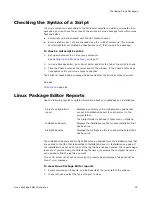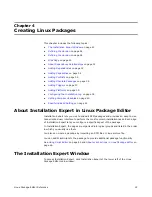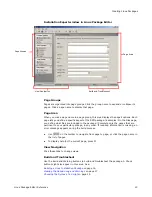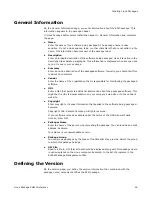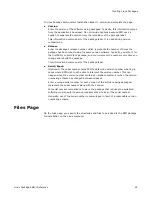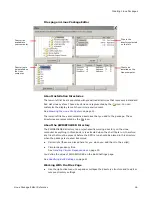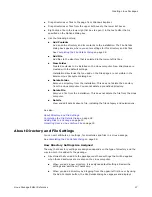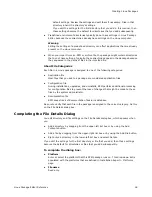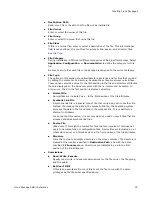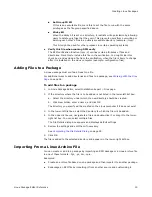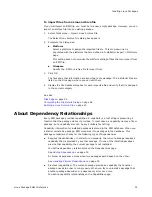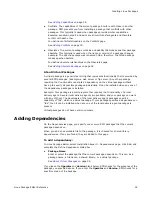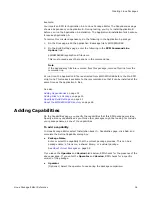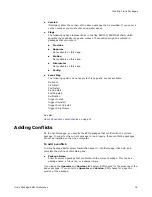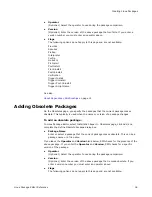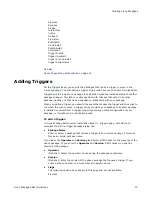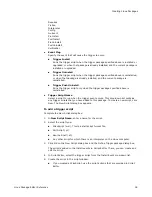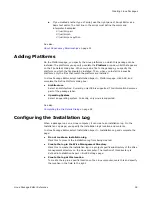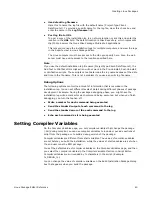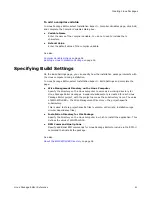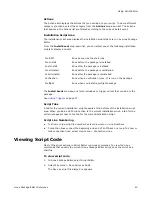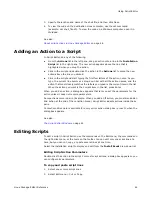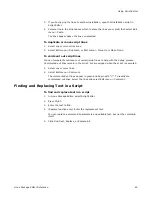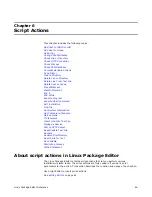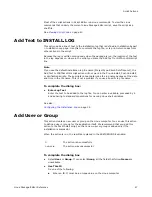
Linux Package Editor Reference
32
Creating Linux Packages
See
Adding Capabilities
on page 34.
z
Conflicts. The capabilities of the current package interfere with those in another
package. RPM prevents you from installing a package that conflicts with other
packages. This typically is used when packages provide similar capabilities.
Example: sendmail, vmail, and exim are all mail transfer agents and therefore
conflict with each other.
You define conflict relationships on the Conflicts page.
See
Adding Conflicts
on page 35.
z
Obsoletes. The current package contains a capability that makes another package
obsolete. This typically is used when the name or version of a package changes.
Example: The apache package was renamed httpd, therefore, the httpd package
makes apache obsolete.
You define obsolete relationships on the Obsoletes page.
See
Adding Obsolete Packages
on page 36.
About Virtual Packages
A virtual package is a generic text string that represents functionality that is provided by
several RPM packages. (Example: a web server or ftp server.) Any other package
requiring that functionality can state a dependency on the virtual package without
having to specify all possible packages individually. It can be installed when any one of
the dependency packages is installed.
Example: Your package is a mail program that requires the functionality of a local
delivery agent. Several local delivery agents are available, and your package can work
with any of them. The developers of the local delivery agent packages specify a
capability of “lda”, which is a virtual package. If your package specifies a dependency on
“lda”, then it can be installed when any one of the local delivery agent packages is
present.
Virtual packages do not have version numbers.
Adding Dependencies
On the Dependencies page, you specify one or more RPM packages that the current
package depends on.
When you add an executable file to the package, it is checked for shared library
dependencies. If any are found, they are added to this page.
To add a dependency:
In Linux Package Editor, select Installation Expert > Dependencies page, click Add, and
complete the Define Dependency dialog box:
z
Package Name
Enter or select the package that the current package depends on. This can be a
package name, a file name, a shared library, or a virtual package.
See
About Virtual Packages
on page 32.
If you leave the Operator and Version blank below, RPM checks for the presence of the
package you specified above. If you enter the Operator and Version, RPM checks for a
specific version of the package.


